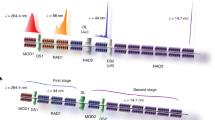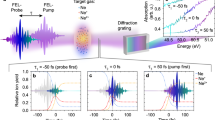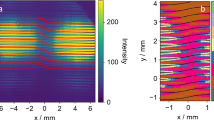Abstract
THE photomultiplier sensitized to fluorescence has recently been used in the vacuum ultra-violet to measure intensities in the spectrum of the direct-current hydrogen arc1. The short-wave limit of this spectrum occurs at 850 A., however, and intensities are too low to be useful below 1000 A., while there are several regions of low intensity below 1500 A. Since most alternative sources of vacuum ultraviolet spectra make use of either sparks or pulsed discharges, it is desirable to adapt the photomultiplier to record the spectrum of such an intermittent source.
This is a preview of subscription content, access via your institution
Access options
Subscribe to this journal
Receive 51 print issues and online access
$199.00 per year
only $3.90 per issue
Buy this article
- Purchase on Springer Link
- Instant access to full article PDF
Prices may be subject to local taxes which are calculated during checkout
Similar content being viewed by others
References
Johnson, Watanabe and Tousey, J. Opt. Soc. Amer., 41, 702 (1951). Bolton and Williams, Brit. J. App. Phys., 4, 6 (1953).
Tobin, Grundfest and Schoenfeld, Rev. Sci. Instr., 22, 189 (1951).
Steinhaus, Crosswhite and Dieke, J. Opt. Soc. Amer., 43, 257 (1953).
Author information
Authors and Affiliations
Rights and permissions
About this article
Cite this article
MASLEN, V., MEHABRY, M. & WILLIAMS, S. Measurement of Spark Spectrum Intensities in the Vacuum Ultra-Violet with a Photomultiplier sensitized to Fluorescence. Nature 173, 76–77 (1954). https://doi.org/10.1038/173076a0
Issue Date:
DOI: https://doi.org/10.1038/173076a0
Comments
By submitting a comment you agree to abide by our Terms and Community Guidelines. If you find something abusive or that does not comply with our terms or guidelines please flag it as inappropriate.



